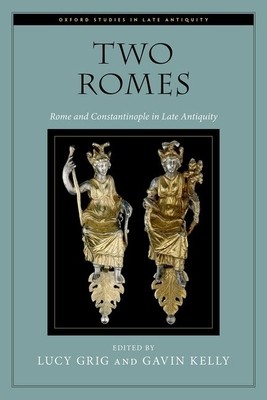
- We will send in 10–14 business days.
- Publisher: Oxford University Press, USA
- ISBN-10: 019024108X
- ISBN-13: 9780190241087
- Format: 15.5 x 23.4 x 3.3 cm, softcover
- Language: English
- SAVE -10% with code: EXTRA
Two Romes (e-book) (used book) | bookbook.eu
Reviews
Description
The city of Constantinople was named New Rome or Second Rome very soon after its foundation in AD 324; over the next two hundred years it replaced the original Rome as the greatest city of the Mediterranean. In this unified essay collection, prominent international scholars examine the changing roles and perceptions of Rome and Constantinople in Late Antiquity from a range of different disciplines and scholarly perspectives. The seventeen chapters cover both the comparative development and the shifting status of the two cities. Developments in politics and urbanism are considered, along with the cities' changing relationships with imperial power, the church, and each other, and their evolving representations in both texts and images. These studies present important revisionist arguments and new interpretations of significant texts and events. This comparative perspective allows the neglected subject of the relationship between the two Romes to come into focus while avoiding the
teleological distortions common in much past scholarship.
EXTRA 10 % discount with code: EXTRA
The promotion ends in 17d.00:21:55
The discount code is valid when purchasing from 10 €. Discounts do not stack.
- Publisher: Oxford University Press, USA
- ISBN-10: 019024108X
- ISBN-13: 9780190241087
- Format: 15.5 x 23.4 x 3.3 cm, softcover
- Language: English English
The city of Constantinople was named New Rome or Second Rome very soon after its foundation in AD 324; over the next two hundred years it replaced the original Rome as the greatest city of the Mediterranean. In this unified essay collection, prominent international scholars examine the changing roles and perceptions of Rome and Constantinople in Late Antiquity from a range of different disciplines and scholarly perspectives. The seventeen chapters cover both the comparative development and the shifting status of the two cities. Developments in politics and urbanism are considered, along with the cities' changing relationships with imperial power, the church, and each other, and their evolving representations in both texts and images. These studies present important revisionist arguments and new interpretations of significant texts and events. This comparative perspective allows the neglected subject of the relationship between the two Romes to come into focus while avoiding the
teleological distortions common in much past scholarship.


Reviews